How Learning to Paint Heightened Winston Churchill’s Legendary Powers of Persuasion
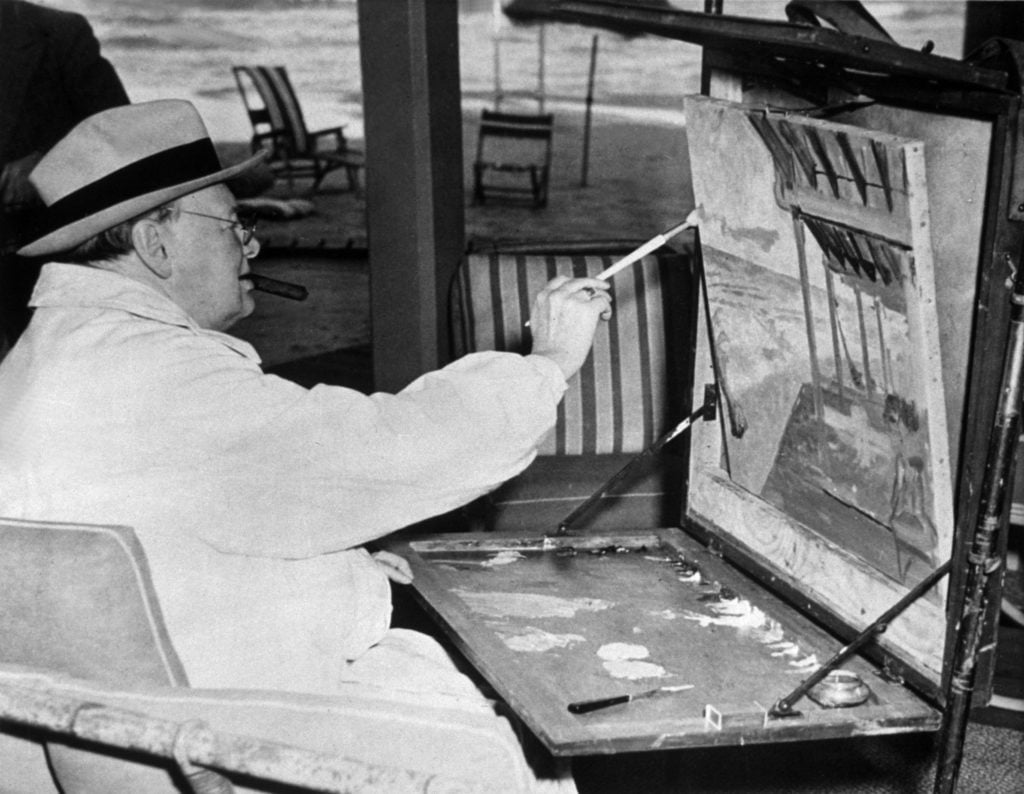

Artnet Gallery Network

Winston Churchill’s political life and military career have been meticulously documented in scores of publications. But the story of how he came to art is far less known, even though he was a prolific painter of more than 550 canvases during his lifetime, often documenting the landscapes of his travels en plein air.
Now, a new exhibition at Heather James Fine Art in Palm Desert, California, sheds light on the former prime minister’s practice, bringing together a series of oil paintings from the 1920s to 1940s, made during the height of his political career. Mostly impressionistic landscapes—Churchill’s preferred genre—the works give us a peek into his travels across Europe, North America, and North Africa at the time.
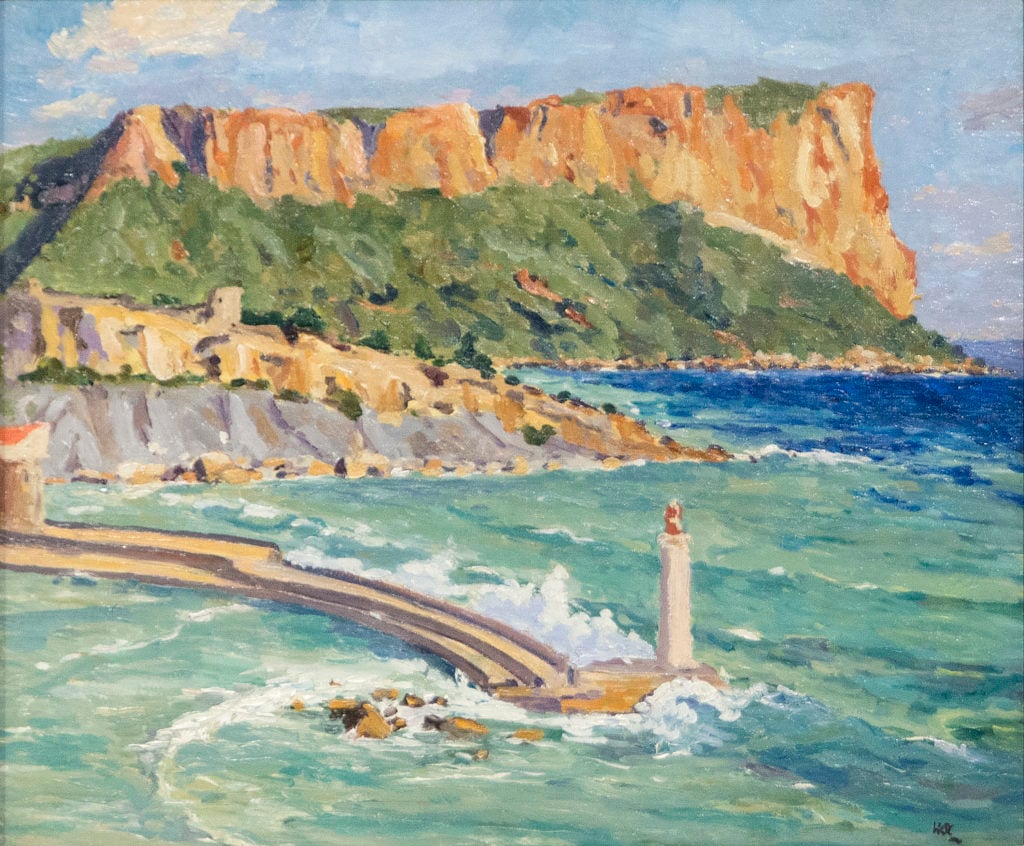
Winston Churchill, Coast Scene Near Marseilles (c. 1935). © Churchill Heritage Limited. Courtesy of Heather James Fine Art.
It was a bout of depression that led Churchill to painting, when he was already age 40. In 1915, one of the darkest periods of his life, Churchill co-engineered an ambitious plan to invade Turkey—Germany’s ally in World War I—through the Gallipoli peninsula. However, the attack was a massive failure and resulted in hundreds of thousands of deaths.
Great Britain was forced to recede and Churchill was among those blamed for the debacle. A newly formed wartime coalition government demanded his demotion and, in November of that year, after briefly serving in the Chancellor of the Duchy of Lancaster, he resigned from the cabinet and retreated to France.
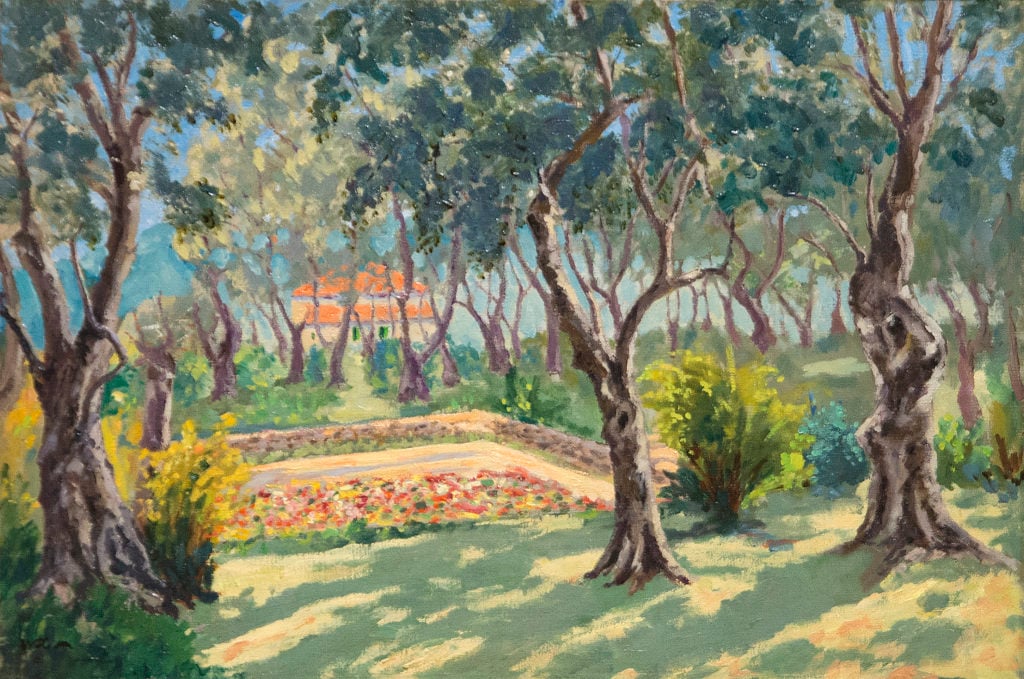
Winston Churchill, The Sunken Garden of La Dragonnière, Cap Martin (c. 1930s). © Churchill Heritage Limited. Courtesy of Heather James Fine Art.
“He fell into a deep depression and was spiraling downwards with no sign of a way out,” says Duncan Sandys, Churchill’s great-grandson, whose family consigned the paintings.
Then one Sunday afternoon, a despondent Churchill watched his sister-in-law, Lady Gwendoline Churchill, painting in the garden. She noticed him looking at her, and, in an effort to raise his spirits, handed him a paintbrush. Churchill took to painting immediately, and his family soon set him up with a palette, canvases, and an easel.
“Churchill was a sensitive man, but I believe that painting made him more appreciative and observant of all that was around him,” Sandys says. “Painting became his sanctuary—a place of calm in a storm, a place to recharge batteries and regain perspective. And although [his mood] subsequently suffered from what he called his ‘Black Dog,’ it was never as deep or as destructive as it had been in that summer of 1915.” Indeed, Churchill returned to the UK in 1916 and rejoined the cabinet.
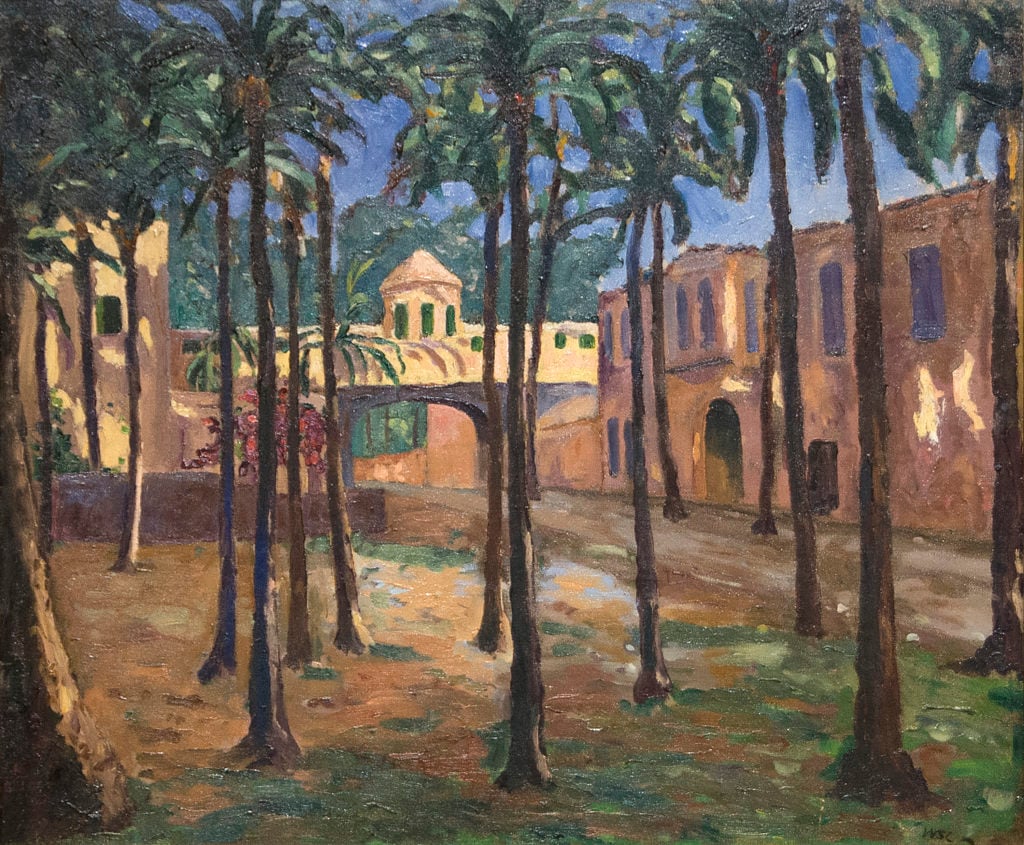
Winston Churchill, A North African Town (c. 1935). © Churchill Heritage Limited. Courtesy of Heather James Fine Art.
Sandys credits painting with providing his great-grandfather with skills that helped his political and diplomatic career. “If you ask people today about Winston Churchill, one of the things they often say is that he was a great orator and writer,” says Sandys. “People remain captivated by his speeches, his broadcasts, and his writing. Why? In part, because they are so descriptive. From painting, Churchill talked about his improved powers of observation. Read almost anything he wrote and you can feel as though he is painting a picture before your eyes. I believe he turned what he saw into compelling words which, when broadcast, rallied the world.”
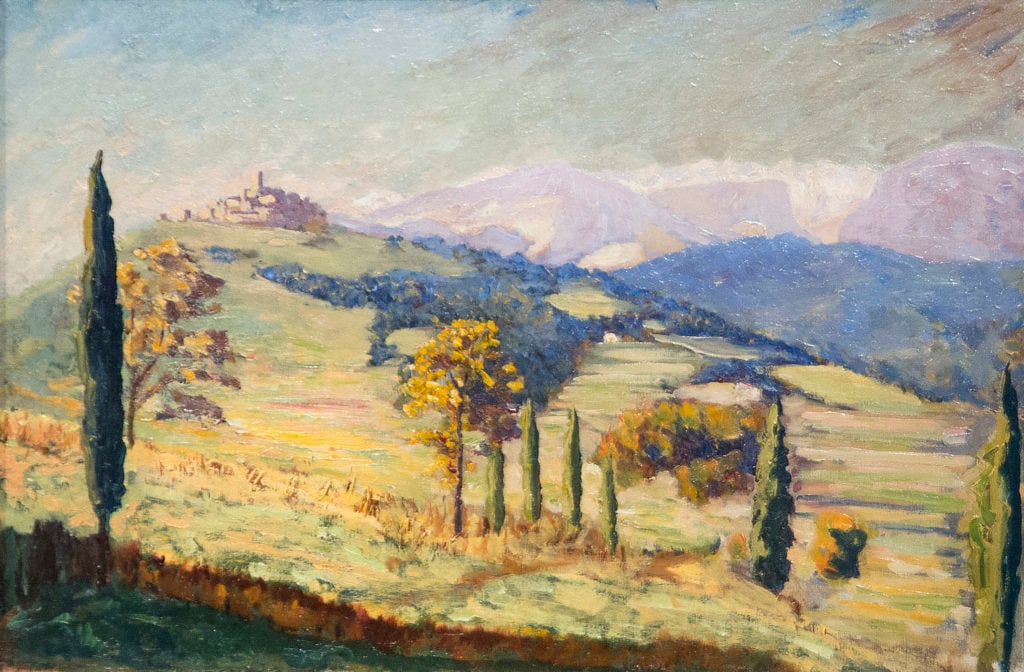
Winston Churchill, A Distant View of Eze (c. 1930). © Churchill Heritage Limited. Courtesy of Heather James Fine Art.
“The Paintings of Sir Winston Churchill” is on view at the Palm Desert branch of Heather James Fine Art through May 30, 2018. The exhibition will move to the gallery’s San Francisco location from June 1 – June 30, 2018, and then on to Heather James’s Jackson Hole outpost from July 1 – September 16, 2018.
